Why Should I Bring my Pet to Willows for Treatment of BOAS?
Willows is one of Europe’s leading small animal referral centres. Our state-of-the-art hospital is led by internationally renowned Specialists, committed to providing the highest standards of veterinary care. Our Soft Tissue Specialists have a particular interest and extensive experience in the treatment and management of patients with BOAS.
Our team of Surgeons are supported by our multi-disciplinary team of Specialists across a number of disciplines including; Anaesthesia, Diagnostic Imaging and Emergency and Critical Care. Willows also has a large dedicated team of Vets, Nurses and clinical support staff available 24 hours a day, every day of the year to provide the best possible care for your pet.
What is Brachycephalic Obstructive Airway Syndrome (BOAS)?
In general, this condition refers to compromised air movement through the upper airways (nose, mouth, voice box) and trachea (windpipe) resulting from brachycephalic head conformation (short-muzzle and flattened face dogs).
BOAS is usually only diagnosed in certain breeds, and not all individuals within a breed will be affected. Recent research suggest the condition occurs in approximately 40% of English bulldogs, 45% of French Bulldogs and around 60% of Pugs.

What are the Signs of BOAS?
The signs of BOAS are varied and can range in severity, including some or all of the following:
- Snorting or snoring at rest or during exercise
- Clear nasal discharge
- Reduced or poor exercise tolerance
- Difficulty breathing during exercise
- Prolonged recovery after exercise or following exposure to warmer conditions
- Poor tolerance to heat stress
- Restlessness at night
- Sleep apnoea
- Retching, regurgitation, vomiting
- Collapse due to lack of air.
You should consider seeking veterinary advice if you have noticed any of the clinical signs outlined above. Below are some video examples of noises Vets listen for when assessing a patient.
What are the Most Common Causes of BOAS?
BOAS is the result of multiple factors acting together to cause obstruction to air flow into the lungs.
Primary factors (present from a very young age and related to the head shape):
- Stenotic nares (narrow nostrils)
- Aberrant nasal turbinates
- Overcrowded turbinates
- Over long and thick soft palate
- Laryngeal collapse (Pugs only)
- Hypoplastic trachea.
Secondary factors (progressive deteriorations to the airway resulting from the abnormal forces present during breathing):
- Mucosal hypertrophy
- Laryngeal collapse
- Tonsillar hypertrophy / eversion
- Gastro-intestinal signs (regurgitation, acid reflux, vomiting, hypersalivation)
When Should I Request a Referral for my Dog?
If you are at all concerned you should arrange a consultation with your local Vet who may recommend a referral to a Specialist for a more detailed assessment. Research has shown that early intervention is likely to offer a better outcome than waiting until the condition has become severe. However, not all dogs assessed at Willows proceed to surgery, so if you are in any doubt we would advise you request an exercise assessment by our Specialist- led team.
What Treatments are Available for BOAS?
There are a number of surgical procedures available to try and help individuals suffering from BOAS. The Specialists at Willows keep up to date with the large volume of recent research available for this condition and will tailor surgery to the specific needs of your pet.
What can I Expect if my Pet is Assessed for BOAS?
The first consultation is extremely important for both you and your dog. A Willows Specialist will discuss your concerns in detail and perform an examination to determine the severity of BOAS. It is common for an exercise test to be performed as part of this assessment to provide reliable objective information that can be used to determine the grade of severity of your dog. This same assessment can then be used at a later date to assess the effectiveness of surgery. Not all dogs presenting for BOAS assessment at Willows require surgery. Following the assessment the Specialist will advise if further airway examination (under anaesthesia) is appropriate for your dog.
What are the Potential Complications of Surgery?
BOAS surgery aims to improve air flow through a fundamentally compromised upper airway. Unfortunately, it is not possible to correct all of the challenges faced by these dogs, as such they remain compromised to varying degrees despite the appropriate airway surgery having been performed.
The recovery from anaesthesia and the hours immediately following the procedure are the most vital, our Specialist team will do everything possible to minimise the risk of any significant complications. Complications can vary in severity. Most are relatively minor and improve in time, however some can be more serious. The surgical team will keep you informed as often as required regarding any concerns they have about your pet. Most patients do not suffer any significant issues and are able to return home the day after surgery.
What can I Expect if my Dog Undergoes BOAS Surgery?
Most dogs suffering from clinical signs of BOAS that receive prompt, appropriate treatment can experience a significant improvement in exercise tolerance and ease of breathing. However, as it is not possible to create a completely normal airway for the brachycephalic dog, pets can remain prone to heat stress and many are unlikely to be able to exercise to same extent of dogs with normal head conformation. It is also likely that some respiratory noise will continue despite the surgery.
It is generally hoped that surgery to the nares, soft palate and the larynx will slow the progression of voice box collapse (laryngeal collapse) by improving the airflow and reducing the negative pressures developed during respiration. Early surgery, carried out before the voice box collapse has become severe, should maximise the benefit from surgery and minimise the risks of significant voice box collapse later in life.
Many dogs do not experience further significant deterioration in the voice box during their lifetime and therefore never require additional surgery. Despite treatment, voice box collapse can however reach a critical level in some cases and so further surgery may be required.
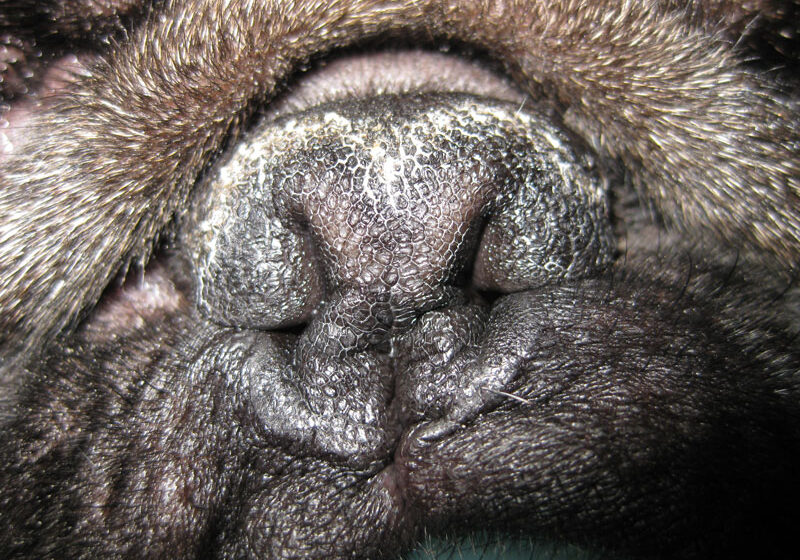
Fig 1: An anaesthetised pug prior to rhinoplasty surgery showing severely narrowed openings to the nasal cavity.
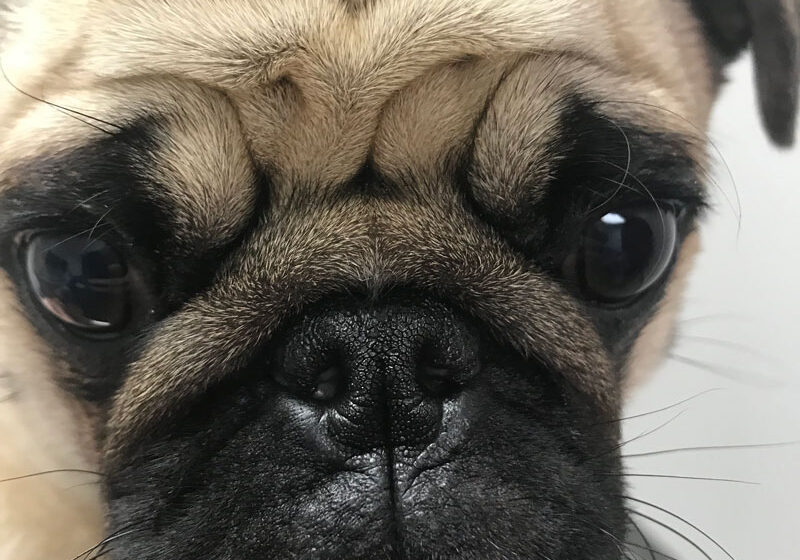
Fig 1: An anaesthetised pug prior to rhinoplasty surgery showing severely narrowed openings to the nasal cavity.
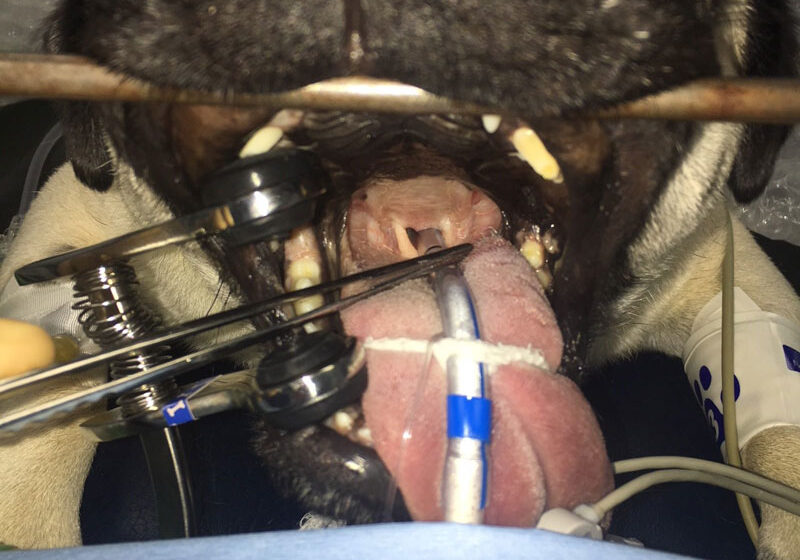
Fig 3: An overlong soft palate in a pug prior to surgery. The tip of the soft palate is sitting within the opening of the voice box and draped over the breathing tube that has been placed.
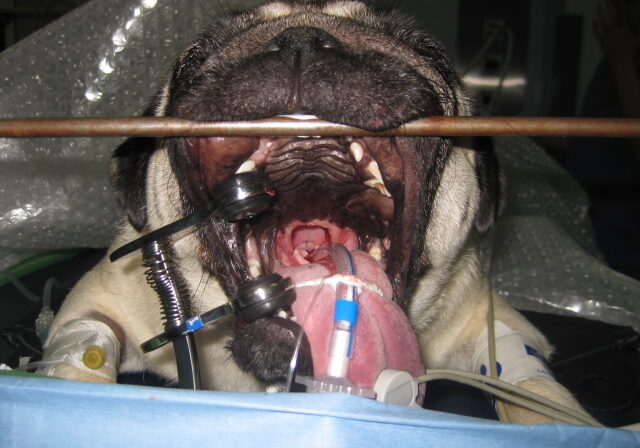
Fig 4: Photograph of the same dog as in Fig 3 immediately following completion of palate shortening surgery.
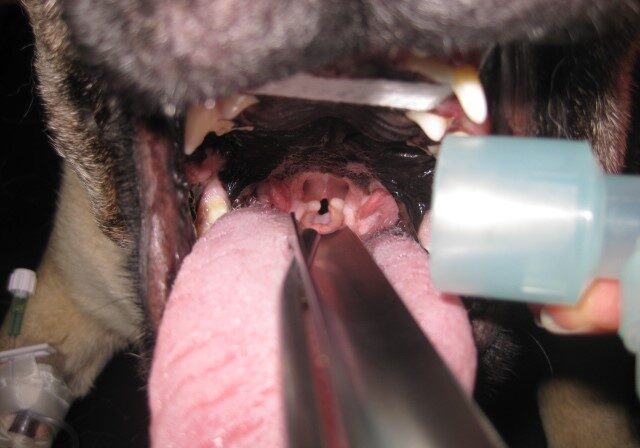
To save this page as a PDF, click the button and make sure “Save as PDF” is selected.
Soft Tissue Surgery
Find out more
To assist owners in understanding more about Soft Tissue Surgery we have put together a range of information sheets to talk you through the some of the more common soft tissue conditions seen and treated by our Specialists.
Condition:
Treatment:

